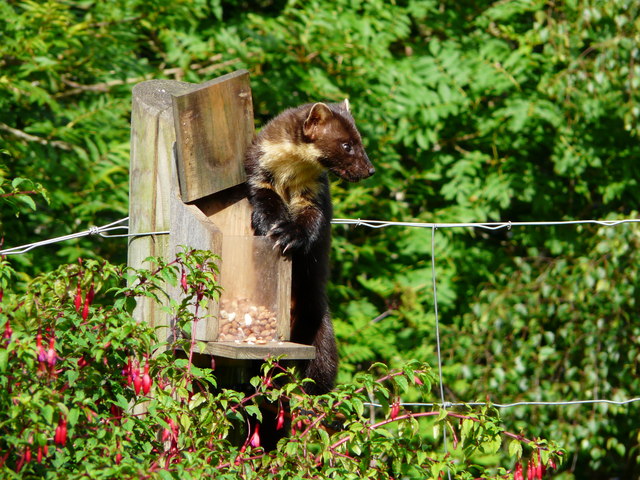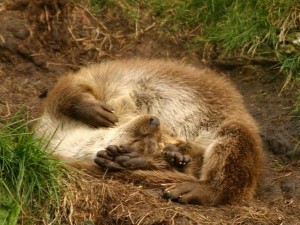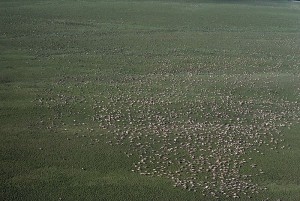Pine Martens: The Comeback
Small populations survived in Wales and areas of northern England at very low densities, but the only viable populations left could be found in the North West Highlands of Scotland where persecution pressures were less.
 Image: Sarah McGuire [CC-BY-SA-2.0 (http://creativecommons.org/licenses/by-sa/2.0)], via Wikimedia Commons
Image: Sarah McGuire [CC-BY-SA-2.0 (http://creativecommons.org/licenses/by-sa/2.0)], via Wikimedia Commons The pine marten is one of our rarest mammals. The species suffered major population declines throughout the 19th Century as a result of persecution and the clearance of woodland, and was extinct throughout much of Britain by the beginning of the 20th Century. Small populations survived in Wales and areas of northern England at very low densities, but the only viable populations left could be found in the North West Highlands of Scotland where persecution pressures were less. Now, thanks to the expansion of plantation forest cover during the last century, and full legal protection since 1988, the pine marten is staging a comeback.
A new report published last month confirmed the recovery. Produced by Scottish Natural Heritage (SNH) and the Vincent Wildlife Trust, the report shows that the population in Scotland is expanding across much of the country, and recolonising areas where local populations had been wiped out in the past. Pine martens are now present in many eastern parts of Scotland, including Aberdeenshire, Moray, Angus, Perth and Kinross, and parts of Fife. They have also moved south into Argyll, the Trossachs, Stirlingshire and some parts of the central belt, and can now be found close to some of Scotland’s major urban areas.
Throughout the summer of last year, 1 kilometre line transects were surveyed for pine marten scats, from which DNA was extracted to confirm their species of origin. Records were also collected from local biological records centres and other wildlife organisations. This enabled SNH to estimate that there are now between around 2,600 to 3,500 adult pine martens in Scotland. This great success comes in the Year of Natural Scotland – 2013 is dedicated to celebrating Scottish biodiversity.
Pine martens are also recovering in Ireland, where one study has shown that they have come to the rescue of another beleaguered mammal. Where there are strong populations of pine martens, red squirrels are prospering, and grey squirrels are disappearing. DNA from hair samples found that where the population density of pine martens was 3 to 4 per square kilometre of woodland, almost all the grey squirrels were forced out of the area. Samples of scats for dietary analysis showed that they are eating a lot of grey squirrels but that alone would not be enough to cause the population crash. One theory is that the presence of predators is disrupting the grey squirrels feeding, breeding and sense of security. As red squirrels are more agile and rarely feed on the ground, they are less exposed to danger, and pine martens rarely eat red squirrels.
It is hoped that the natural recovery of pine martens could replace the time consuming and expensive programme of trapping as a means of controlling grey squirrels. This is a great example of a one native, endangered species helping another to defeat a widespread, destructive non-native species.





3 Comments
Good article, Anna, and great to read about how the pine martin’s success has benefited the red squirrel. Both are iconic animals for Scotland, and rank among my favourite species. I have to admit that when I first became aware of the increase in pine marten numbers throughout Scotland, I was a bit concerned as to the effect this would have on an already beleaguered red squirrel population…a double whammy!
Thanks Doug, good news for a change! Hope you’re well.
I wounder did anyone look at the possibility that because the grey is larger than the red squirrel that the dreys are more accessible and therefore may be getting raided for kits.